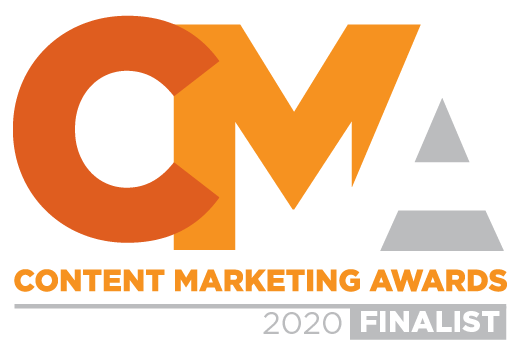
An editorial style guide is an essential go-to source for your organization’s content and writing, and includes your standards for grammar, punctuation, word usage, sourcing, voice, tone, and even directives to support your organization’s core values. Your editorial guidelines help keep your communication clear, consistent, and credible.
Craft an easily shareable style guide with our templates for Google Slides, PowerPoint, and Adobe Acrobat PDFs.
Words matter. Editors have fought over them since the second word was ever scrawled. The first word was just a word. The first word was boundless, untouchable — a thing of beauty. But two words in a row? Oh, that’s when self-dubbed editorial gods had to have their say and put a point on it, definitively. A dot. Or why not three dots? Perhaps an exclamation, a question mark. Or why not a line of derision to express their discontent in totem, if the first two words shouldn’t have been the first two words at all? The abject horror.
And so style guides began.
Most associate editorial style guides with nerdy tomes. Albeit, they are — and that’s the point. The Associated Press Stylebook alone is more than 600 pages of corrective pointers, examples, and mental wraps for historical and cultural contexts. It’s so dense you’ll often find roundups of the most important AP Style updates for each edition, just to calm writers’ relentless fears of being finger-shamed for noncompliance. Editors are a fussy set.
But… yeah. You don’t need to go that deep, fussy or not. In the digital age you just need to adapt your brand’s editorial guidelines for the changing workforce and the ever-growing number of media platforms. We suggest you defer to the AP Stylebook or The Chicago Manual of Style for the basics but only cull the most important style points and exceptions into your own branded guide. By keeping your style guide separate and distinct you can help freelancers and employees easily follow and adopt your style.
And when in doubt, you can always hire a freelance editor to conjure your own guide.
Here are our pointers to make the most effective editorial guidelines and a digestible editorial style guide for your brand.
How to make an editorial style guide that freelancers use:
- Make it your own. That’s the point. Your style is your style.
- Stick to the basics. Focus on what’s most important for someone new to your style to know.
- Think of style as principles that will lead the way instead of step-by-step instructions.
- For in-depth guidelines or examples, link to external sources, such as wikis, FAQs on a website, or other guides. Remember that freelancers are not full-time employees. Try to share only the information they need to properly fulfill assignments for you.
Use our editorial guidelines template to create a freelancer-friendly style guide with Google Slides, Adobe Acrobat PDFs, or PowerPoint.
For using Google Slides:
If wikis scare you or you hate the hassles of old PDFs floating around in the digital universe, Google Slides has an excellent “Publish to web” option.
Feel free to copy and download the PowerPoint versions of our horizontal template (fits 12 pages comfortable) or our vertical template (fits 25 pages comfortably) for an easily shareable and updatable editorial style guide. You can use the “Import Slides” function under the File menu in Google Slides to convert the PowerPoint templates for use in Google Slides. Just upload the .PPTX file.
- Make your style guidelines easy to scan, read, and present.
- Use editable, navigational elements like a sidebar to make your guide more useable.
- You can select “Publish to the web” in the File menu in Google Slides to publish a live slide presentation that you can update at any time from your master Slides doc, which is more convenient than using PDFs (which you can still download). You can share the link and users can refresh the presentation to see the latest version at any time.
For using Adobe Acrobat:
You can download and edit the PDF versions of our horizontal template or our vertical template.
For using PowerPoint:
You can download and edit the .PPTX versions of horizontal PowerPoint template or vertical PowerPoint template.
12 popular sections to use in your editorial style guide:
1. Introduction
An effective style guide should set the tone with an original introduction, something that captures your voice and speaks to your brand’s core values. Whether it’s a first-person account from your content chief, an exposition on how style fits into your company’s operations, or a sole power statement to capture your personality, you need to deliver with authority.
For the ClearVoice Editorial Style Guide, I emphasized how we esteem the power of words — because words are central to finding your clear voice (deliberate brand reference there). I chose free verse because the format encourages reflective pauses, which in turn add more weight to the words and their meaning. I tacked on a parenthetical at the end for a dose of levity. (Levity. Always. Remember to bring it back down to earth.)
Words matter.
Where we use them and how.
When we use them and why.
Whether they fill our screens
Or never land on a page.
Words are everything.
And with that everything
Comes power.
So use it wisely.
(And when in doubt, just follow the Golden Rule — and AP Style.)
Outside of our editorial style guide, we also can use the verse in graphics and branded content to support our mission and vision, which leads us to section duo…
2. Mission and vision
What is your brand’s North Star? Although your mission, vision, and philosophy should be a part of your brand style guide, we recommend sharing them in order to inform your editorial guidelines as well. Don’t miss an opportunity to help creators understand your brand’s purpose and reason for being. Learn more about crafting your mission and vision.
Our North Star at ClearVoice lives in our brand name itself: a clear voice. See how our mission supports our vision? And how our vision supports our philosophy? There’s a clear direction from what we do that leads us to where we’re going and why we’re taking the journey.
Our Mission — What We Do
Create better content.
Our Vision — Where We’re Going
We strive to further creative collaboration for making content that empowers, delights and brings more clarity to the world.
Our Philosophy — Why We Love It
We believe a clear voice is the most powerful voice, no matter its volume or medium. So we live to help you express yours. It’s the ClearVoice way.
If you’re still unclear, here’s another way to think about your mission, vision, and philosophy: If your brand was a theme park ride, what kind of ride would it be? Where would the ride take you? Why would you want to hop on that ride again and again?
3. Core values
In addition to your brand’s mission, vision, and philosophy, take the opportunity to share your brand’s core values. These values can be principles or directives that apply more than to just content but to all of your operations. They help content creators trust you and relay your values throughout the collaboration process (even to third parties).
You can use the “rule of three” as a good place to start. Share three core values with actionable suggestions on how people can support each. Remember to follow parallel structure for each value to make them easier to understand and remember.
Here are our core values at ClearVoice:
Be smart and mindful.
- Don’t stop learning.
- Don’t make assumptions.
- Don’t be afraid to ask questions.
- Don’t dismiss other ways of doing things.
Be kind and respectful.
- Don’t forget to listen.
- Don’t dismiss the concerns or experiences of others.
- Don’t treat anyone as expendable or worthless.
- Don’t use inflammatory language.
Be sincere and truthful.
- Don’t promote misinformation.
- Don’t use empty hyperbole.
- Don’t mislead about your experience or intentions.
- Don’t pass off the work of another as your own.
4. Voice and tone
Your brand’s voice and tone should support your core values. Although voice and tone are often used as synonyms, don’t get caught up on the nuanced differences. Your voice is the content of what you say, while your tone is how you say it.
To help people grasp your voice and tone, think of several adjectives or phrases to describe your brand’s personality and how they relate to your audience. How do you want to interact with your audience? What kind of energy do you want to convey? How do you want people to feel about you — and about themselves after engaging with you? You can use or link to real examples if need be.
We encourage our voice and tone at ClearVoice with several directives:
Friendly
Create a conversation. Consistently use the second person to directly connect to your reader. Imagine talking to friends, family, or coworkers. Write with a relaxed, familiar tone that says, “I like you.”
Engaging
Create interest. Life is short, and so are readers’ attentions. Hook them with lively language, varied sentence structure and a judicious use of wit. Write for people, not robots.
Intelligent
Create trust with smart copy. Readers want to learn about your topic. So do your homework. Make your content useful, informative, accurate, and timely. Write with authority.
Helpful
Create solutions. We’re all in this life together. So think about how you would like someone to help you with yours. Be honest, sincere, and considerate of your reader’s needs. Help your reader learn more and take action.
Active Voice
Create a real focus on the reader with the active voice — sentence structure that requires a subject/verb/object relationship. It also helps you achieve our other guidelines.
Strong Verbs
Create a sense of movement, promote an immediate visceral response, and encourage an interaction from your reader. Avoid the “to be” form of verbs, where possible.
5. Style and usage
Style and usage. Ah, the cozy, let-me-cuddle-up-and-scold-you-for-excessively-hyphenated-modifiers sweet spot for most editorial types. Most people might skip the aforementioned touchy-feely sections of a style guide to get to the juicy copy details right here, but they shouldn’t. Without knowing your brand’s core values and vision, whatever words follow would be meaningless. With this bit in mind, here’s where you get to the nitty-gritty.
Good grammar, proper word usage, and consistency matter. Without them your credibility becomes crud-ibility. Yep, just crud — like that awful wordplay right there. So we recommend most brands defer to the The Associated Press Stylebook for general style and usage.
However, please don’t rehash the entirety of AP Style in your style guide. The hashing that has gone on for decades has already be done for you. Instead, call special attention to areas where your style and editorial guidelines differ and where you encounter the most common issues in content produced for your brand. For instance, you can draft a roundup of most relevant AP Style updates. Or another good place to start is with a “term list” or a “word list” of most common exceptions or mistyped/misused terms.
Here’s our list of the correct styles for top offenders in ClearVoice content. (We just updated this list. No trolling past posts, per piacere. But ClearVoice blog writers beware: Eyes are watching.)
- click-through rate (CTR)
- copy editor, copy editing
- copywriter, copywriting
- cost-per-click (CPC)
- coworking (not co-working)
- dropdown
- ebook (not eBook or E-book)
- e-commerce (not eCommerce)
- emoji (singular and plural)
- ghostwriter, ghostwriting
- internet (not Internet)
- livestreaming (not live-streaming)
- login (noun), log in (verb)
- martech (general term; MarTech is a brand name)
- pay-per-click (PPC)
- username
- web (not capitalized when referring to internet)
- website
- white paper (not whitepaper)
- Wi-Fi (not wifi or wi-fi)
6. Punctuation
Just as for style and usage, we recommend most brands defer to the Associated Press Stylebook for punctuation rules. However, AP Style doesn’t always fit well with digital experiences, and it does not apply to copy elements used in search engine optimization.
Highlight areas where your brand has different requirements for punctuation. A couple of examples:
Ampersands &
Only use ampersands in proper brand and company names, or in SEO titles and UI/navigation elements. Don’t use them in article headers or usual copy.
Quotation Marks ‘ or “ for Titles
We do not italicize composition titles. Instead, we use single or double quotation marks.
- Use single ‘quotation marks’ around: movie, TV show, book, and podcast titles; titles for major creative works.
- Use double “quotation marks” around: song, poem, and essay titles; television and podcast episode titles.
- Do not use quotation marks around: names of magazines, periodicals, or newspapers.
7. Link usage and formatting
Linking is a reality that editors cannot escape in a digital world, and it’s often an area in online copy that doesn’t get as much scrutiny as it should. Formatting links clearly and consistently is important to maintain readers’ expectations of what they’ll get beyond each click.
Sharing your editorial guidelines for using links and on the specifics of formatting them can save your editor lots of time. Start with the most important rules here. If you have lots of specifics (or those for various platforms), provide specific examples or screenshots in additional docs or a wiki.
We could go on for days about linking, but here’s where we landed for our own top tips from an editorial perspective. Note: These guidelines address link usage and formatting, not SEO link-building strategy (an entirely different subject).
Usage and Intent
- Do not use “click here” or “learn more here” links.
- Do not include more than one link in a single sentence or two links in an entire paragraph.
- Do not insert links in direct quotes from people.
- Do not link to unvetted websites or social media.
- Do not link generic words that could go anywhere.
- Do not link numbers on their own.
- Do not link the names of people in body copy. Instead link a descriptive phrase about a person if you need a link to establish credibility.
- Do not link individual words or phrases in H2, H3, or H4 headers. Link no text or all text in a header.
Formatting
- Ideal character length of links in paragraph copy is 20-30 characters (including spaces).
- Do not link text longer than 50 characters (including spaces) within paragraph copy.
- Do not bold or italicize links.
- Do not change the font or color of links.
- Do not link words with ALL CAPS.
- Do not link punctuation that directly follows a term, such as commas, colons, semicolons, or end punctuation.
- Do not link punctuation that bookends a term, such as “quotations marks” or (parentheses).
8. Sources
Maintaining trust includes verifying the credibility of the sources you cite or link to in your copy, whether on your website, in articles, or on social media platforms. The last thing you want is to send readers down rabbit holes or come off like a spammer.
In an environment where misinformation spreads at Twitter speed, we recommend you establish rules to vet your sources or provide content creators with a list of pre-vetted sources that might apply to your brand’s content.
In our editorial guidelines, we started by answering the basic questions around primary and secondary sources.
Seek Out Primary Sources
When you cite or link to another source you are responsible for vetting the accuracy of the source. Follow the journalistic principle of seeking out primary sources whenever possible.
What Is a Primary Source?
A primary source is an original work or a first-hand account of an experience. Primary sources can include: legal documents, speeches, manuscripts, autobiographies, books, letters, interviews, public records, data studies, live broadcasts, eyewitness accounts, video/audio recordings, creative works, your own first-hand reporting, and other original media.
What Is a Secondary Source?
A secondary source is an analysis, interpretation, or opinion about (or based upon) a primary source. Secondary sources can include: newspaper/magazine articles, editorials, analysis of research, biographies, commentaries, encyclopedias et al.
Read our in-depth article on using primary vs. secondary sources to support your content marketing.
9. Interviews
Interviews with experts, employees, or customers can be an integral part of your content strategy, as they build your credibility and can better inform your product or service — especially if you master the art of open-ended and closed questions. At ClearVoice, interviews are a core part of our content, so we dedicated a style page for the basics.
If you don’t rely on interviews, you could highlight guidelines for your core content type(s) or content-gathering methods instead.
Here’s an excerpt from our style guide:
Include Credibility Links
When interviewing someone for ClearVoice content, please include an appropriate link to support their credibility:
- ClearVoice Portfolio
- Business website
- LinkedIn profile page
- Social media page on Twitter or Facebook
The following sites do not count as credibility links:
- Wikipedia
- Ebay, Etsy, Amazon, and commercial seller sites
- Quora, Reddit, and public Q&A forum sites
10. Accessibility
The Americans With Disabilities Act (ADA) also applies to the online world. Although many factors in accessibility might be handled via automated or technical means (e.g., for navigational elements), there are still areas in copy where guidelines can help make your content more accessible in an ever-growing number of platforms and devices.
You can defer to ADA Best Practices for some guidance. Since your specific editorial guidelines might vary based on your content or distribution platforms, you can highlight the basics, such as rules for “Alt” text for images, and link to more in-depth resources for additional specifications.
Here are some examples we started with:
“Alt” Text
The “Alt” tag provides alternative text to describe an image that does not render or cannot be seen. It also aids in SEO.
- Describe images. Label navigational elements.
- Don’t use lists of keywords in “Alt” text.
- Please use the sentence case for descriptions.
- When describing an image, write a statement that makes sense when spoken aloud.
- Treat “Alt” text just as you would a headline or caption. Contextualize the image for your content.
- Do not use “Alt” text for images that are purely for design and don’t add information.
- For images that visualize text, please repeat or capture the essence of the text in the “Alt” text.
Charts and Graphs
When using charts and graphs that are images, you can include the data and text in the “Alt” text. There is no limit to the amount of copy that can be put in an “Alt” tag.
Directional Language
Don’t refer to the position of elements on a page (e.g., above, to the right), as positions can change on different platforms.
Link Specificity
Avoid links that could be used anywhere, such as “click here” or “learn more here.” Always try to be more specific.
11. Branding
Although you should have a separate brand style guide that goes in-depth, highlighting the basic usage guidelines for your brand name and legal company name is a good place to start. You can also list variations or contextual uses of your brand name that are either approved or not.
The point in an editorial style guide is not to repeat all of your brand style, but to highlight the most salient brand style points that a content creator should know.
In the ClearVoice Editorial Style Guide, we addressed the most common issues we encounter. Consider someone writing a press release or article about your brand. How would you prefer they mention your brand?
ClearVoice
You can use ClearVoice as a noun when referring to our brand in general (“ClearVoice is a content solution”) or in the collective sense of a team (“ClearVoice can help you”).
Do not use ClearVoice as noun to refer to a person. Do not use “They are a ClearVoice.” Instead, you can use the generic reference, “They are a clear voice,” or call them a ClearVoicer.
You can use ClearVoice as an adjective when referencing our branded services or products, but in general do not capitalize the noun you are modifying (e.g., ClearVoice platform). Exceptions include the ClearVoice Talent Network and proper titles (e.g., ClearVoice Success Manager).
ClearVoicer
You can use the terms ClearVoicer or ClearVoicers to refer to freelancers who have claimed ClearVoice Portfolios or to anyone who uses the ClearVoice platform and has agreed to our Terms of Service. We use #ClearVoicers in social media.
ClearVoice, Inc.
- Only use ClearVoice, Inc., in legal documents or when mentioning ClearVoice as a business entity.
- ClearVoice, Inc., is a wholly owned subsidiary of Fiverr International Ltd.
- You can say “ClearVoice is part of the Fiverr family” if you need a more personable tone in non-legal copy.
Terms to Never Use
Do not use: ClearVoices, ClearVoicing, or ClearVoiced. We want to avoid misinterpreted connections to invoices or invoicing.
12. Boilerplate
Your brand’s boilerplate, or company summary, should be a part of your brand style guide. But it also has significant editorial value. Including your full boilerplate (which can be used in press releases) and/or a shortened version for other content channels can help writers and external parties speak about your brand more consistently. Learn about writing boilerplates in our how-to post.
Here’s the shorter version of our ClearVoice boilerplates:
ClearVoice is the premium platform brands trust to create meaningful content to power key marketing channels like SEO, brand, and paid media. We assemble and direct freelance teams from our vetted talent network of over 25,000 writers, editors, and designers to produce great content for any need or scale. With workflow and production managed in the ClearVoice platform, we provide a modern, high-quality solution to marketers globally. We invite you to visit us at clearvoice.com, read our acclaimed blog, or follow us on LinkedIn @ClearVoice.
















